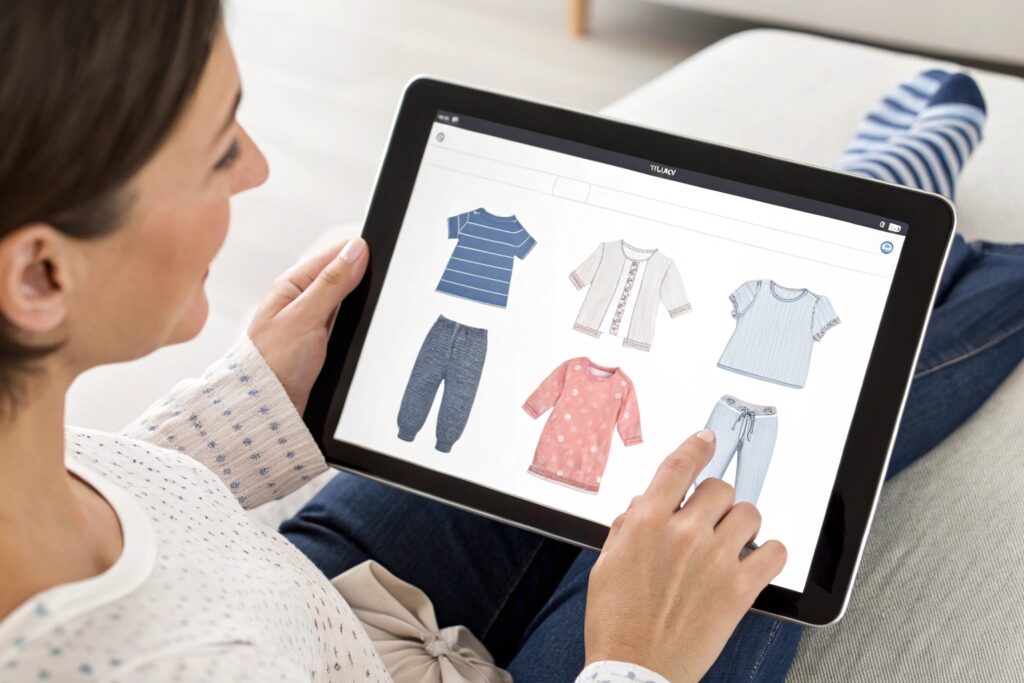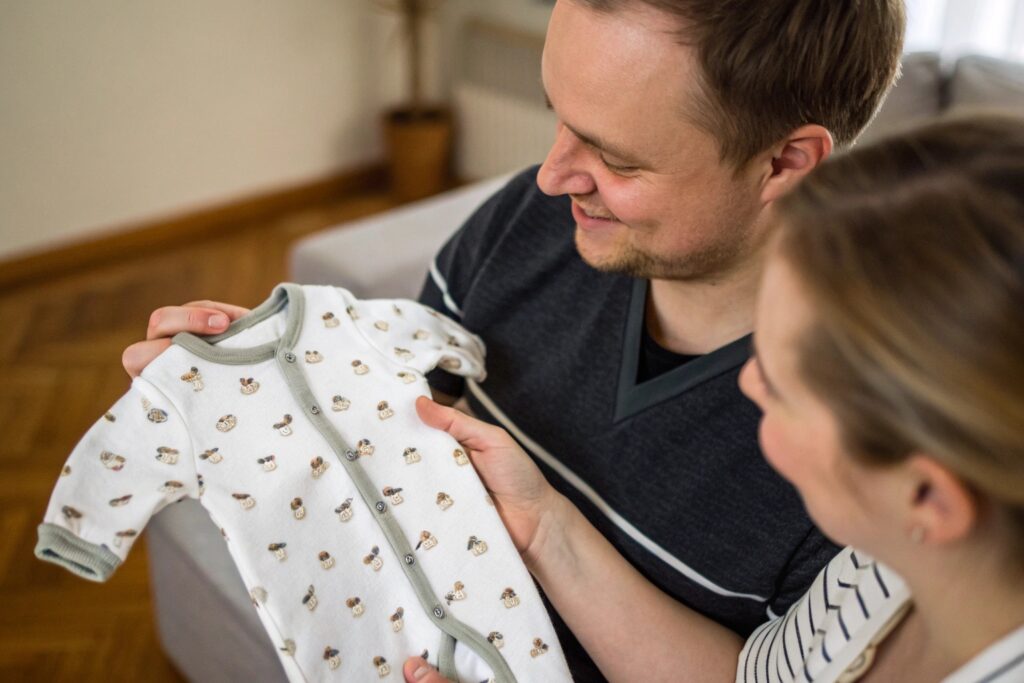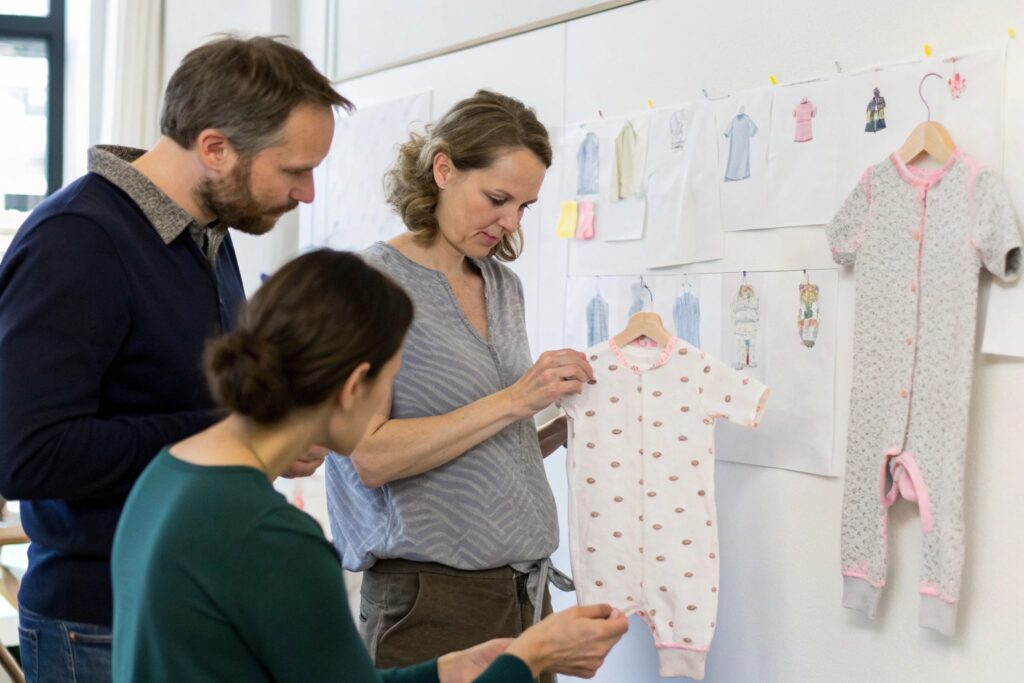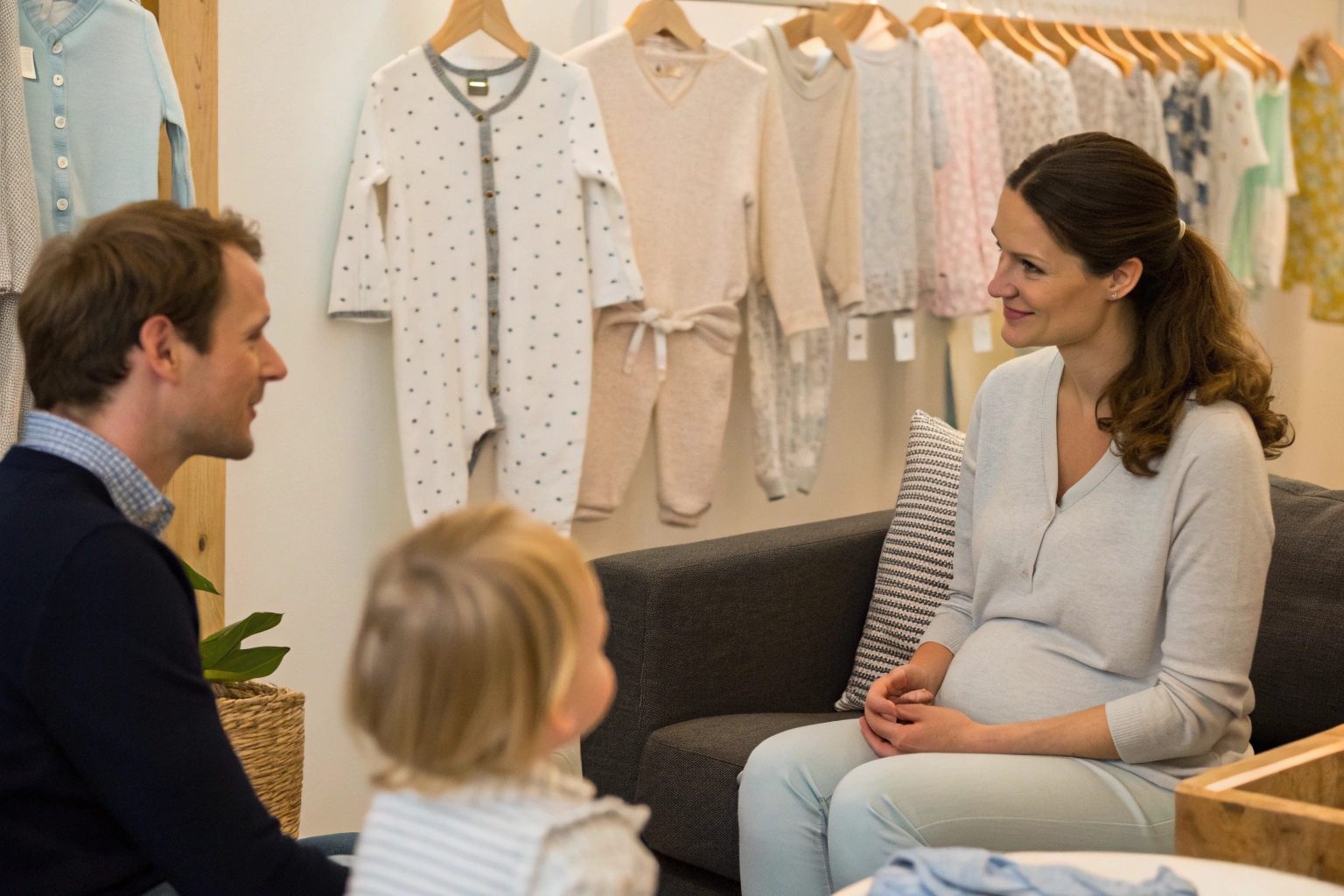“Client-centric” is more than just a buzzword. In the baby clothing industry, it means understanding parents’ daily realities—and delivering more than just soft fabrics or cute prints.
Client-centric babywear brands put parents first by listening to real needs, offering personalized service, improving through feedback, and creating long-term value beyond the product.
Here’s how I’ve seen client-centric thinking turn small brands into trusted names in babywear.
How Babywear Brands Can Focus on Parent Needs?
Parents aren’t just looking for baby clothes—they’re looking for trust, safety, comfort, and convenience. A truly client-focused brand listens and delivers solutions that make their parenting journey smoother.
To focus on parent needs, babywear brands must simplify shopping, solve daily pain points, and create clothes that fit into real-life routines.

What do parents really care about when shopping for babywear?
It goes beyond just color or size. They care about:
- Softness on sensitive skin
- Easy diaper access
- Clear sizing for fast growth
- Machine-washable, durable fabrics
- Practical designs for everyday use
They also value simple experiences—websites that don’t overwhelm, size guides that are easy to follow, and quick checkout processes.
Here’s a simple value framework I use when designing around parents:
| Parent Need | Clothing Feature |
|---|---|
| Comfort | Organic cotton, tag-free seams |
| Convenience | Two-way zippers, snap closures |
| Clarity | Honest size guides, real model info |
| Peace of mind | Certifications, safe dyes, breathable fabric |
Being client-centric starts with listening—and ends with solutions.
What Personalized Service Looks Like in Kidswear?
Parents remember the brands that make them feel seen, heard, and appreciated. Personalized service adds emotion and attention to the transaction—and it makes brands unforgettable.
Personalized service in babywear means customized products, responsive support, flexible options, and thoughtful communication.

What does great service look like in action?
Here are a few real examples:
- A store emails sizing advice based on a parent’s last purchase
- A brand adds the baby’s name to the order thank-you card
- A seller offers to combine sizes in a multi-pack to suit fast-growing babies
- A live chat agent helps a parent pick the right fabric for a baby with eczema
Simple touches—like remembering a returning customer’s preference—turn one-time buyers into long-term fans.
What services help build trust?
| Service Feature | Parent Impact |
|---|---|
| Name personalization | Emotional connection |
| Size-swap guarantee | Removes purchase anxiety |
| Quick, kind replies | Feels human and safe |
| Gifting options | Solves a problem |
| Order updates with visuals | Builds excitement and assurance |
In a sea of mass production, thoughtful service is what makes a brand stand out.
Why Feedback Matters in Baby Clothing Design?
Parents are the real-life testers. Their feedback uncovers what works—and what doesn’t. Ignoring it means guessing. Listening to it means growing.
Feedback fuels better babywear by revealing real-world use, pain points, and creative opportunities for future designs.

What kind of feedback should brands focus on?
Don’t just ask “Do you like it?” Ask:
- Did the size match your expectations?
- Was the fabric soft enough for your baby’s skin?
- Were the snaps easy to open?
- Did the outfit hold up after washing?
- Would you buy again or recommend this?
That’s where the gold is.
Use these methods:
- Post-purchase review emails
- Quick surveys with incentives
- Instagram polls or story Q&As
- Live chat follow-ups
- Customer photo galleries with captions
How do brands turn feedback into better designs?
Let’s say 40% of reviews say “sleeves are too tight.” That’s your sign to adjust the armhole or stretch percentage in your next batch. One review might not matter—but patterns always do.
When brands update designs based on real feedback, customers notice—and trust grows.
How to Build Loyalty Through Client-Centric Practices?
Loyalty doesn’t come from one good product—it comes from many small moments of being cared for. A client-first brand builds systems that reward, recognize, and retain.
To build loyalty, babywear brands must create consistent experiences that make parents feel seen, valued, and connected over time.

What practices turn shoppers into repeat buyers?
- Loyalty Programs: Points for purchases, referrals, or reviews
- Tailored Email Flows: Suggest new sizes based on baby’s age
- First-Name Personalization: “Hey Anna, here’s a romper for 9–12 months”
- Birthday Gifts or Discounts: For baby’s milestones or first-time moms
- Early Access Drops: Give VIPs first pick of new designs
Loyalty is also about consistency:
- Clothes that arrive on time
- Sizes that match the chart
- Packaging that feels intentional
- Follow-ups that show care
| Loyalty Driver | Example Implementation |
|---|---|
| Recognition | “Thank you, our favorite repeat buyer!” |
| Ease | Reorder in one click |
| Emotion | “We’re so glad you trusted us with baby’s first outfit.” |
When parents trust your brand with their child, they don’t forget it.
Conclusion
Being client-centric in the babywear industry isn’t just a strategy—it’s a mindset. When you listen, personalize, adjust, and follow through, parents feel the difference. And that difference becomes your brand’s biggest competitive edge.










